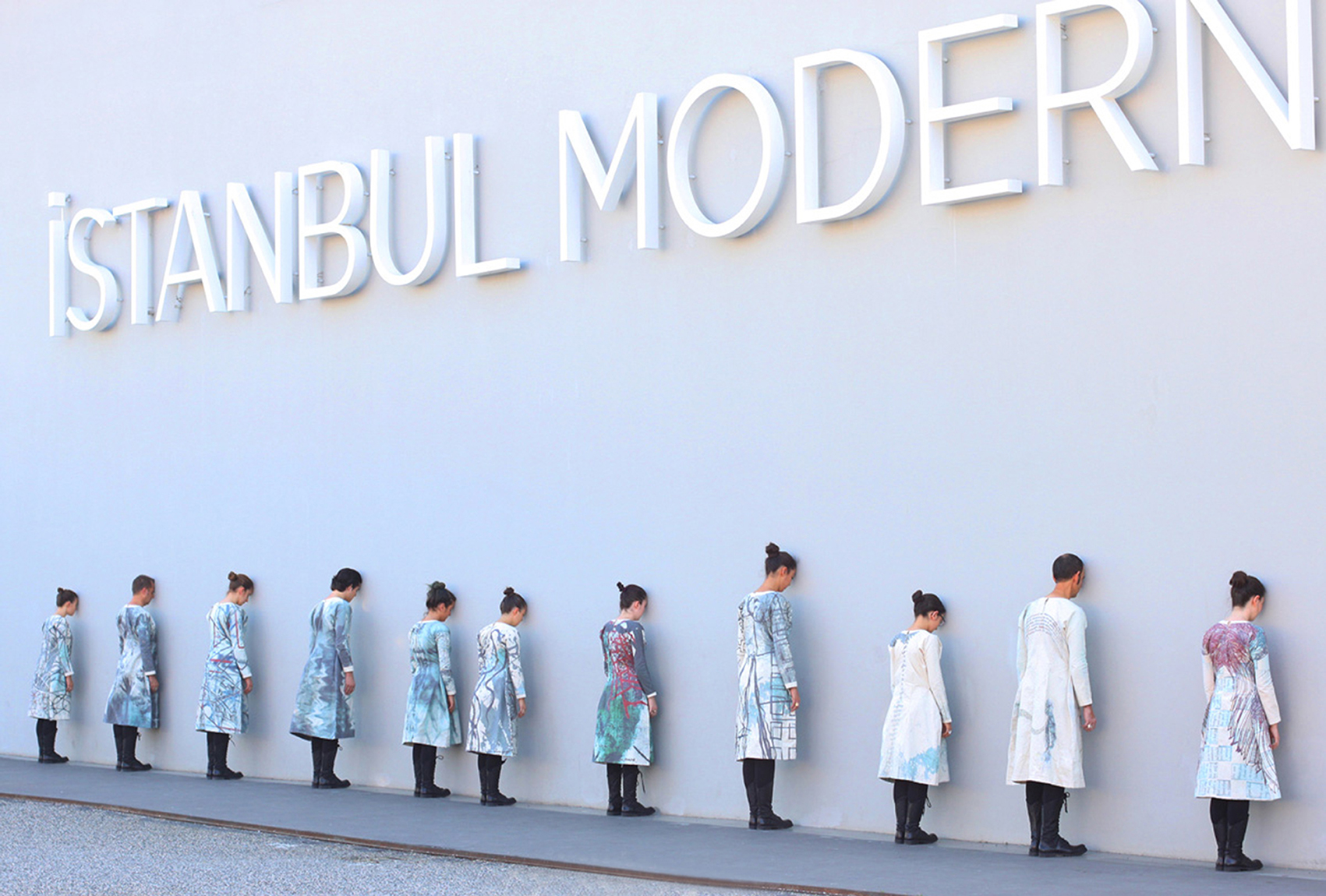
FLUX: Venice / Istanbul Modern
A SILSILA COLLECTIVE PERFORMANCE
DIRECTED BY JEFFREY BAYKAL-ROLLINS


Flux Venice, Performance, Piazza San Marco, Venice, Italy, May 23, 2013 (Photo: Zeynep Özel)

FLUX ISTANBUL MODERN, PERFORMANCE, AUGUST 4, 2013 AT ISTANBUL MODERN ART MUSEUM, IN A PROJECT PARTNERED WITH MOMA AND MOMA PS1 (PHOTO: PELIN GURE)

Flux Venice (Photo: Zeynep Özel) 2013

Flux Istanbul Modern (Photo: Özden Şahin) 2013

Flux Venice, tracing the line of the Turkish carpet design in the tile patterns (Photo: Zeynep Özel) 2013

Flux Istanbul Modern (Photo: Özden Şahin) 2013

Flux Venice, weeping gesture (Photo: Zeynep Özel) 2013

Flux design, ink drawing and photograph (with Ecegül Bayram) 2013
FLUX: Istanbul Modern / Piazza San Marco, Venice, 2013
Initiated by the Istanbul Modern Art Museum in collaboration with The Museum of Modern Art (MoMA) and MoMA PS1, FLUX was a site-specific group performance embodying a transformative cultural reflection about the future. Directed by Jeffrey Baykal-Rollins, this two-part performance was choreographed by Ernesto Pujol, known for his site-specific performances and social choreographies. The one-hour performance at Istanbul Modern integrated itself into the museum’s architectural kinetic installation on view, creating an ephemeral hybrid space, an architecture-within-the-architecture, part surreal garden and part secular cloister. Audiences could sit and experience a performative meditation that engaged aspects of contemporary life in Istanbul, with its lingering past and its pending future.
A parallel performance was also performed at Venice’s Piazza San Marco, celebrating the vibrant relationship between these two sister cities (past and present, from waters’ edge to waters’ edge). In the tradition of tanztheater, Silsila Collective’s twenty performers moved through the geometry of the Piazza’s massive tile patterns, which are based upon ancient Turkish carpet designs. Each performer was wearing a garment covered in drawings and calligraphy comprised entirely of digital information from their collective stories and imagery. Essentially, Silsila performed as “living books”, visible histories of their personal and cultural bodies, moving through the map of a carpet long-gone.